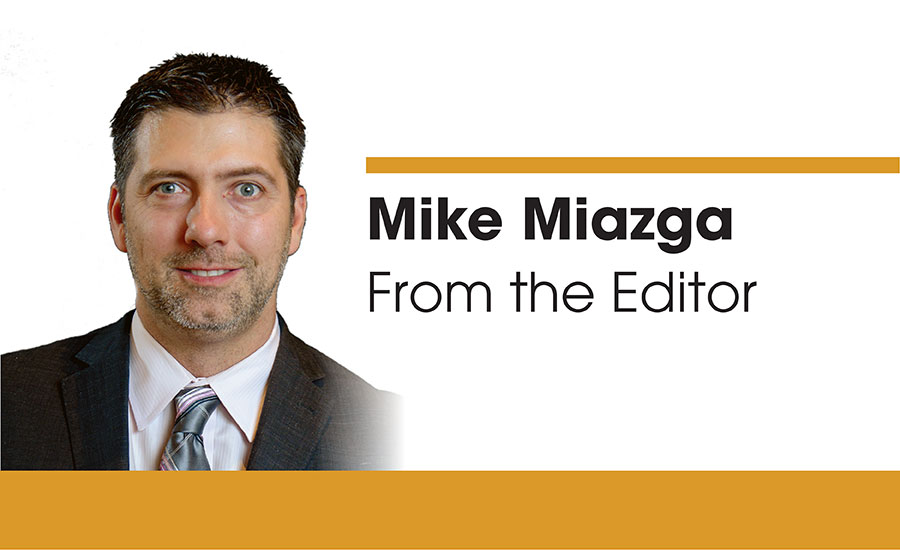Stop spraying and praying

Marketing to different generations can overcome your FOMO.
Where did the term Generation X come from?
Marketing expert Kelly McDonald gave the audience at WIT’s recent fall networking meeting at the Ritz-Carlton in Phoenix some great trivia firepower when she explained Generation X is simply the 10th generation of Americans.
I stumped my wife on that one, but being a schoolteacher she wanted to know what Generation Y stood for and what presumably Generation Z (has that generation even been named yet?) will stand for. My only explanation was Y and Z follow X.
We’ve hit on the generation topic a healthy amount in these pages this year, but McDonald’s talk to WIT wholesalers had a different message. Marketing to different generations can be a game-changer in today’s business climate.
The energetic McDonald noted the days of “spraying and praying” where marketing targets a general audience no longer makes good business sense.
“The differences in generations are profound,” she said. “They are decades apart in age and lifetimes apart in technology. Having different values translates into differing expectations. Understanding different from you means understanding their life, their priorities and their values.”
McDonald, owner of Dallas-based McDonald Marketing, demonstrated generational differences with two questions that could have different answers depending on age: 1) How did President John F. Kennedy die? 2) Who is Ron Howard?
For the first question the matures (age 67 and older) and baby boomer (48-66) generations might answer by gunshot in Dallas, while Generation X (35-47) might answer in a plane crash near Martha’s Vineyard (how John F. Kennedy Jr. died) and Generation Y (18-34) may answer “Kennedy, who?”
Answers to the latter may vary in generation from Opie (“Andy Griffith Show”), Richie Cunningham (“Happy Days”) or an award-winning director.
McDonald went on to break down the various generations by key emotional drivers and icons, parenting styles and how information was/is delivered.
Amtrak is one particular company that seized the moment with generational marketing. McDonald noted the rail carrier has seen a big spike in business on East Coast routes due to offering Wi-Fi service on its trains.
“Generation Y has saved Amtrak from extinction,” she said. “Generation Y has FOMO - fear of missing out. They don’t want to turn off that laptop or phone while the airplane goes up and down.”
But this type of marketing, as McDonald told the audience, is more than just understanding generations. Diversity, rural to urban shifts, changing customer expectations and growing Internet competition also should be taken into consideration.
In terms of market diversity, McDonald noted one in three people in this country is nonwhite and one in six U.S. residents is Latino (according to the 2010 U.S. Census). In 2010, 16.4% of the U.S. population lived in rural counties, down from 17.3% in 2000.
McDonald’s wide-ranging presentation hammered home the importance of social media and the Internet in marketing efforts.
She noted a truck-lining company with 5,000 Facebook friends had potential customers asking questions on its Facebook page about where the nearest dealer was despite the company having a dealer finder on its website.
“Social media is king,” she said. “Facebook has become a search engine.”
A vehicle windshield repair company took advantage of cyberspace to successfully market an important safety feature to its predominantly female client base. McDonald explained the company emails a photo of the installer prior to the job being performed at the customer’s home.
McDonald added companies should seriously consider optimizing their websites for mobile device access. “Mobile is hot,” she said. “It’s a low-cost conversion. For the first time ever, the Internet is being accessed more on smartphones and mobile devices than on desktops and laptops. That’s a tipping point.”
Part of a sound generational marketing plan, McDonald said, also involves building generational loyalty. She noted matures prefer face-to-face service, while baby boomers want a personalized experience. Generation X is looking for a good value product that solves problems, while Generation Y wants advice and not information.
Perhaps the most interesting anecdote tying together the point McDonald made is the percentage of folks ages 18-35 who have four or more tattoos. Try 30%.
“Your marketing must adapt,” she said.
And those who do and understand customers are a diverse bunch with different needs will reap the benefits.
Where did the term Generation X come from?
Marketing expert Kelly McDonald gave the audience at WIT’s recent fall networking meeting at the Ritz-Carlton in Phoenix some great trivia firepower when she explained Generation X is simply the 10th generation of Americans.
I stumped my wife on that one, but being a schoolteacher she wanted to know what Generation Y stood for and what presumably Generation Z (has that generation even been named yet?) will stand for. My only explanation was Y and Z follow X.
We’ve hit on the generation topic a healthy amount in these pages this year, but McDonald’s talk to WIT wholesalers had a different message. Marketing to different generations can be a game-changer in today’s business climate.
The energetic McDonald noted the days of “spraying and praying” where marketing targets a general audience no longer makes good business sense.
“The differences in generations are profound,” she said. “They are decades apart in age and lifetimes apart in technology. Having different values translates into differing expectations. Understanding different from you means understanding their life, their priorities and their values.”
McDonald, owner of Dallas-based McDonald Marketing, demonstrated generational differences with two questions that could have different answers depending on age: 1) How did President John F. Kennedy die? 2) Who is Ron Howard?
For the first question the matures (age 67 and older) and baby boomer (48-66) generations might answer by gunshot in Dallas, while Generation X (35-47) might answer in a plane crash near Martha’s Vineyard (how John F. Kennedy Jr. died) and Generation Y (18-34) may answer “Kennedy, who?”
Answers to the latter may vary in generation from Opie (“Andy Griffith Show”), Richie Cunningham (“Happy Days”) or an award-winning director.
McDonald went on to break down the various generations by key emotional drivers and icons, parenting styles and how information was/is delivered.
Amtrak is one particular company that seized the moment with generational marketing. McDonald noted the rail carrier has seen a big spike in business on East Coast routes due to offering Wi-Fi service on its trains.
“Generation Y has saved Amtrak from extinction,” she said. “Generation Y has FOMO - fear of missing out. They don’t want to turn off that laptop or phone while the airplane goes up and down.”
But this type of marketing, as McDonald told the audience, is more than just understanding generations. Diversity, rural to urban shifts, changing customer expectations and growing Internet competition also should be taken into consideration.
In terms of market diversity, McDonald noted one in three people in this country is nonwhite and one in six U.S. residents is Latino (according to the 2010 U.S. Census). In 2010, 16.4% of the U.S. population lived in rural counties, down from 17.3% in 2000.
McDonald’s wide-ranging presentation hammered home the importance of social media and the Internet in marketing efforts.
She noted a truck-lining company with 5,000 Facebook friends had potential customers asking questions on its Facebook page about where the nearest dealer was despite the company having a dealer finder on its website.
“Social media is king,” she said. “Facebook has become a search engine.”
A vehicle windshield repair company took advantage of cyberspace to successfully market an important safety feature to its predominantly female client base. McDonald explained the company emails a photo of the installer prior to the job being performed at the customer’s home.
McDonald added companies should seriously consider optimizing their websites for mobile device access. “Mobile is hot,” she said. “It’s a low-cost conversion. For the first time ever, the Internet is being accessed more on smartphones and mobile devices than on desktops and laptops. That’s a tipping point.”
Part of a sound generational marketing plan, McDonald said, also involves building generational loyalty. She noted matures prefer face-to-face service, while baby boomers want a personalized experience. Generation X is looking for a good value product that solves problems, while Generation Y wants advice and not information.
Perhaps the most interesting anecdote tying together the point McDonald made is the percentage of folks ages 18-35 who have four or more tattoos. Try 30%.
“Your marketing must adapt,” she said.
And those who do and understand customers are a diverse bunch with different needs will reap the benefits.
Links
Looking for a reprint of this article?
From high-res PDFs to custom plaques, order your copy today!






